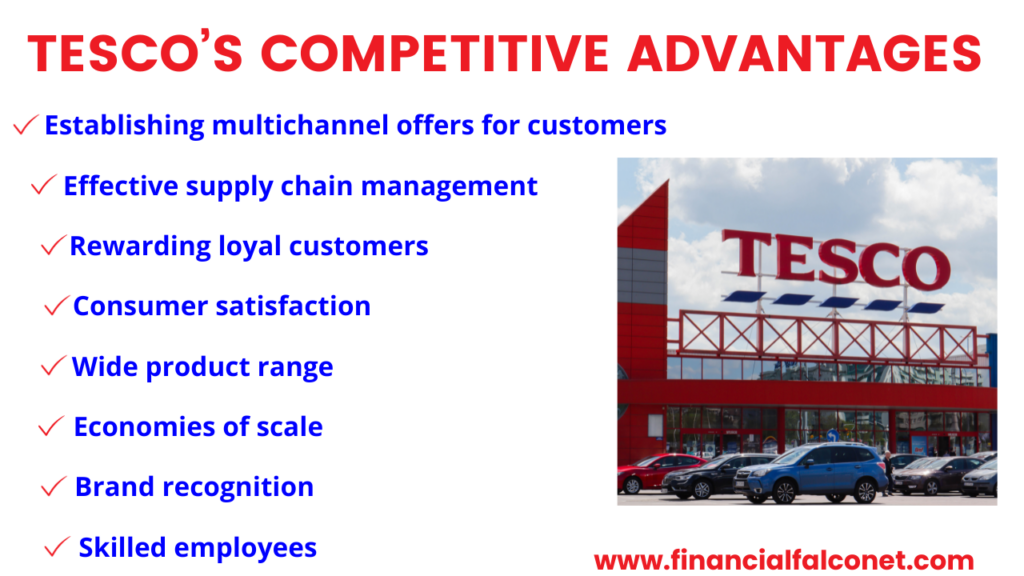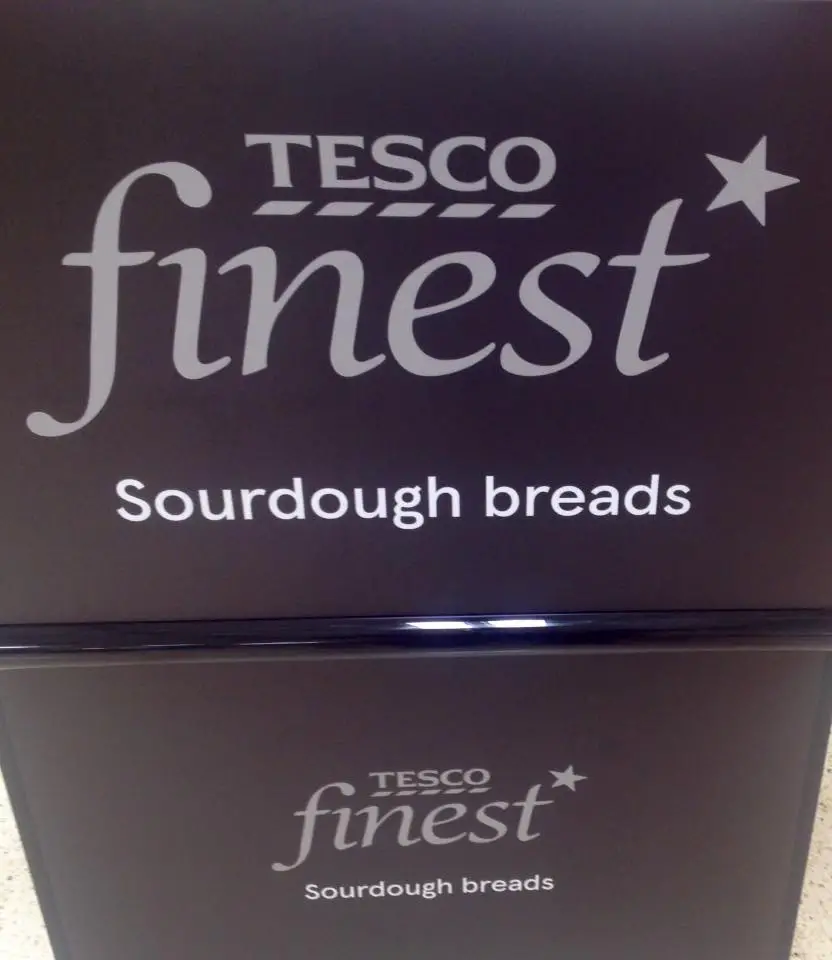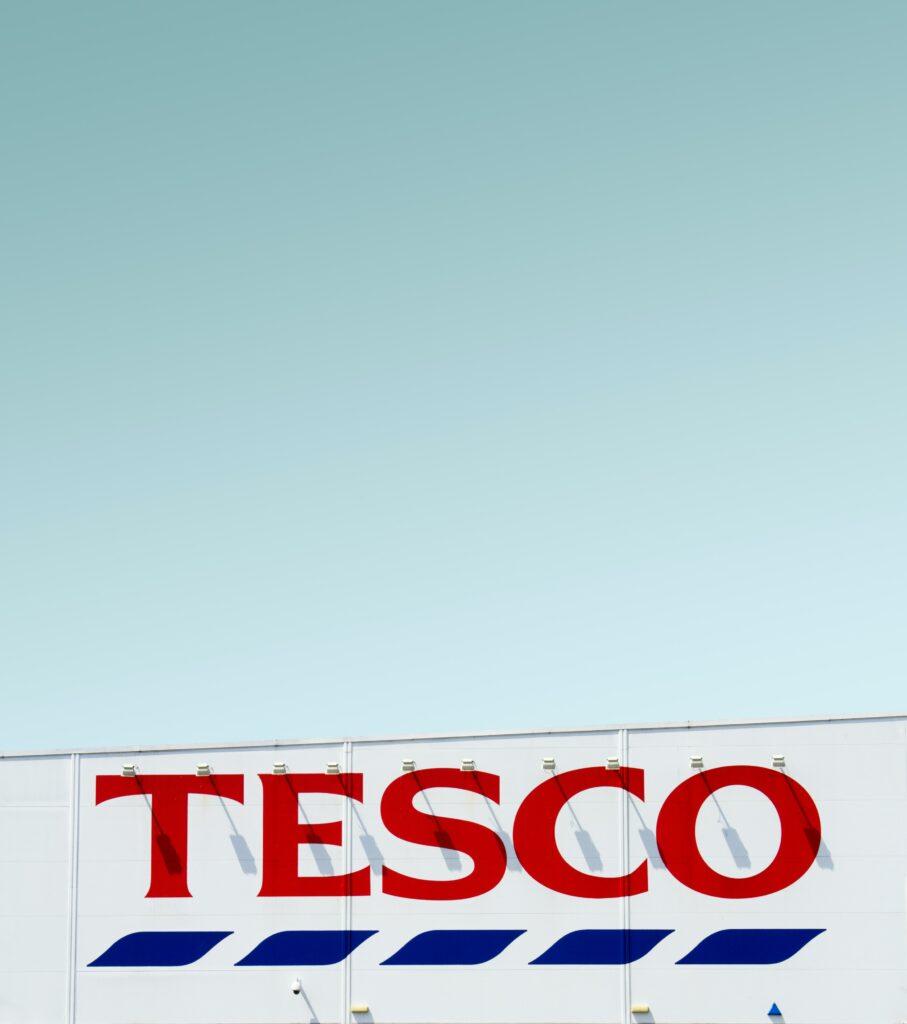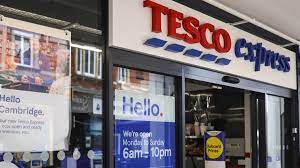Competition in the retail industry is very stiff, especially with the increasing globalization and expansion of most retail brands into several markets to enhance and increase their market share. Hence, a lot of companies employ different strategies in the bid to gain a competitive advantage in this ever-expanding free market.
Several factors contribute to Tesco’s competitive advantage in the retail industry including its customer reward scheme, economy of scale, global brand recognition, and diversified products.
Tesco plc is a multinational retailer of groceries and general merchandise. The brand was established in 1919 by Jack Cohen in Hackney, East London. At this time, it operated as a retailer of groceries but beginning in the 1960s, the brand started diversifying beyond groceries to include the sale of clothes, petrol, and household goods.
This company which began as a stall in London now comprises hypermarkets, supermarkets, and other subsidiaries in the banking, mobile, and oil and gas sectors.
Tesco reportedly has over 4,800 outlets scattered across the world in over 10 countries including the United Kingdom, Spain, Slovakia, and Ireland. Based on the company’s annual report for 2022, the brand boasts a workforce of over 354,000 employees which includes part and full-time employees. Its annual revenue for the fiscal year was £61.344 billion.
Here, we shall consider Tesco’s competitive advantages and strategies that the company has used in its over 100 years of existence.
Read about: Lululemon’s Competitive Advantages and Strategy
How does Tesco differentiate from competitors?
Tesco has been able to differentiate from competitors due to its longtime presence in the retail industry which has enabled the brand to become easily recognizable to a large percentage of consumers. This easy brand recognition has aided the company in getting a significant market share, especially in the United Kingdom.
The company has differentiated itself from competitors due to the competitive strategies of cost leadership, differentiation, and focus which it has employed in its product ranges, quality, and pricing.
Additional differentiators of Tesco include economies of scale, consumer loyalty, skilled workforce, effective product marketing, and distinct supply chain management.

Read about: Target’s Competitive Advantage and Strategy
Tesco competitive strategies
- Tesco’s cost leadership strategy
- Differentiation competitive strategy
- Focus competitive strategy
Tesco’s competitive strategies are predicated upon the three generic strategies propounded by Michael Porter in his 1980 book, Competitive Strategy: Techniques for Analyzing Industries and Competitors. These strategies have been listed above and will be discussed below in terms of how Tesco has used them in its operations.
Tesco’s cost leadership strategy
This is the main competitive strategy used by Tesco in gaining a competitive advantage in the industry. It involves lowering the cost of operations and all other overhead costs so that the cost savings can be transferred to consumers through lower product prices.
The cost leadership strategy of Tesco has aided the company in capturing consumers who want to save money but still access valuable products. This has led to the company’s being able to capture a large percentage of the middle class in the countries where they operate.
Tesco achieves its cost leadership by maximizing its supply chain, eliminating inefficiencies, and sourcing products from manufacturers and suppliers with quality and affordable products.
The brand also utilizes the discount pricing strategy as well as discount coupons to offer lower prices, attract more consumers, and increase sales volume. In turn, these led to increased brand awareness and recognition which offers a significant competitive advantage for Tesco.
Differentiation competitive strategy
Tesco uses differentiation as part of its competitive strategies. Differentiation involves emphasizing the uniqueness of a brand, its products, or services from those already available in the market.
The brand has differentiated itself through effective branding, product diversification, and meeting evolving consumer demands.
For instance, the company has several store variations to cater to different consumer demography such as the Tesco Express stores which have been created as neighborhood convenience stores. They are usually located in residential areas and stock mainly processed foods and high-margin products such as crisps and chocolates.
It has been able to achieve differentiation in the retail industry due to the brand’s continuous drive towards evolving with consumer demands and restructuring its product offerings and store settings to meet these demands. This promptness in meeting consumer demands has been a differentiator for the brand.
Also, the company’s long-time existence in the industry has provided a high level of brand recognition as well as endorsements from a significant number of influencers and celebrities such as British celebrity chef, Jamie Oliver. He partnered with the brand to promote their products by creating a series of recipes using products from the company.
This is another differentiator of Tesco as it gives the brand a stronger foothold in the industry. Hence, providing the company with a considerable competitive advantage in the industry.
Focus competitive strategy
Porter’s third generic competitive strategy is focus which entails narrowing down a company’s products or services to a particular niche of consumers.
Tesco partially uses the focus strategy through its Tesco Value and Tesco Finest initiatives. The former targets consumers who are price-conscious and want to access low-cost products while the former targets consumers who want premium products irrespective of how much they might cost.

The brand started Tesco Value in 1993 while Tesco Finest was started in 1998. These focused offerings have been used by the company to serve specific consumer bases.
Tesco’s combined use of cost leadership, differentiation, and focus as its competitive strategies have created a very strong foundation for the company to gain a competitive advantage in the intensely competitive global consumer market.
Read about: Starbucks’ Competitive Advantage and Strategy
Tesco competitive advantages
- Economies of scale
- Rewarding loyal customers
- Wide product range
- Brand recognition
- Skilled employees
- Establishing multichannel offers for customers
- Effective supply chain management
- Consumer satisfaction
Economies of scale
Economies of scale are some of Tesco’s competitive advantages. According to the National Retail Federation (NRF) Foundation, Tesco is the 18th largest retailer in the world. Being one of the largest retailers in the world means that the company has significant purchasing power.
The brand is able to take advantage of this huge purchasing power to negotiate better and lower prices for their bulk purchases from manufacturers and suppliers that they do business with.
These manufacturers and suppliers on the other hand are more willing to reach a bargain that is acceptable to Tesco considering the large size of their purchase. Thus Tesco accesses products at cheaper rates while the manufacturers gain a significant income for the transaction which results in a win-win situation.
The economies of scale allow the brand to employ the cost leadership competitive strategy by offering products at lower rates to the individuals who patronize their brand. This additionally attracts more patronage, especially from consumers who are price-conscious and want to get the highest value possible from the money they spend on purchasing products.
Rewarding loyal customers
Another factor that is a significant contributor to Tesco’s competitive advantage is the brand’s reward system where they give points to consumers for the purchase they make.
Consumers can get points when they make purchases using any of the brand’s channels such as the Tesco Mobile, Tesco Broadband, Tesco credit card, Tesco Homephone, etc.
This program which is referred to as Tesco Clubcard was introduced by the brand in 1995. It rewarded consumers with 1 point for every £1 spent at the store or on its website. The points can be redeemed at the store and it is equivalent to 1p. It can also be used along with Clubcard deals such as day trips and holiday offers.
Additionally, Tesco has partnered with airlines such as Virgin Atlantic; consumers who have accumulated Clubcard points can convert their points to frequent flyer miles with the partner airline.
The customer reward program is a competitive advantage for Tesco especially when considering its conversion options. According to Statista, Tesco boasts over 20 million active household users of Clubcard in the United Kingdom as of February 2023.
In addition to this large customer base, a lot of brands do not offer reward programs for their customers. Therefore, Tesco gains a competitive advantage due to the Clubcard initiative which increases patronage as well as revenue for the company.
Brand recognition
The brand recognition of Tesco is an additional competitive advantage for the brand. The company has been in existence for over 100 years, which has made it one of the globally recognized brands, especially with its over 4,800 outlets spread across the globe.
Additionally, the long-term existence of the brand has built up trust in the brand as a reliable and dependable business that has been able to survive through different economic downturns such as the global recession of 1982 and 1991 as well as the Great Recession that lasted from 2007 to 2009.

Tesco’s distinctive brand name and logo have also enhanced brand recognition as it cannot be mistaken for another brand. Although Tesco has undergone a number of rebranding efforts and diversification into other industries, its major essence of providing value to consumers has been maintained through the years thereby earning an established presence in the minds of many consumers.
The company’s motto, “Every little helps,” reinforces the brand’s commitment to assist the broad array of individuals who patronize the brand, the communities where it operates, its teeming suppliers, as well as the employees who work tirelessly to enhance the brand’s recognition. Thus, brand recognition is a competitive advantage that Tesco enjoys.
Wide product range
Tesco has grown beyond its humble beginnings and limited products to include a wide variety of products including food, electronics, clothes, and other household items. The wide product range makes the brand more appealing to a wider consumer base because it has positioned itself as a one-stop store from which individuals can get all they want to shop at a competitive price.
Tesco has also delved into providing additional services and products such as tech support, fueling stations, and financial services. This diversification has aided the company in having a competitive advantage over retailers that specialize in only providing a specific product and those that have not diversified beyond the retail industry.
For instance, Tesco’s diversification to the financial sector means that the company now offers services such as mortgages, insurance, savings accounts, and credit cards. Tesco stores and websites serve as channels of marketing these additional services and thereby encourage more consumers to try out these services.
In the long run, Tesco’s competitive advantage both in the retail industry and other industries where it is currently operating keeps expanding and becoming more beneficial to the overall growth of the brand.
Skilled employees
Tesco’s competitive advantage is also enhanced by the brand’s effective leveraging of the skills of its employees whom the brand refers to as colleagues. The brand employs individuals who are well-equipped to effectively function in the fields where they work.
A sneak peek at the company’s career page reveals that the company is intentional about the individuals that they work with. For instance, the brand requires that a Tesco colleague should be multi-skilled. This requirement is necessary because store colleagues employ different skills in their daily work such as working at shopfloors, checkouts, or becoming personal shoppers.
In addition to recruiting the best hands, the company also has several training initiatives to further enhance the skills of its employees. One such initiative is the training of store employees to be flexible and multi-skilled so that they can function well whether they are at the checkout or self-service, picking an online order, or replenishing the shelves.
The company has also provided employees with access to a digital learning platform where they can learn and improve their skills in various core areas of the brand’s store operation. The brand also has a competitive compensation system for its employees.
For example, from July 2022, the brand increased the hourly rates of its store and customer fulfillment center (CFC) colleagues from £9.55 to £10.10
The employees at the helm of affairs are equally well-skilled and experienced in tackling operational, regulatory, and legal challenges that may arise within the organization and in its interaction with external parties such as suppliers and consumers.
Tesco organizes a manager development program to aid its managers in becoming inclusive managers, developing adaptable thinking, and mastering conversations. This helps them effectively manage challenges that arise while discharging their duties.
The skilled employees add to Tesco’s competitive advantages. Due to the high skills of the brand’s employees as well as the brand’s development of and investment in its employees, these employees provide the company’s customers with excellent customer service and experience.
Establishing multichannel offers for customers
Tesco is one of the companies that has effectively leveraged digital technology to provide consumers with a convenient and seamless shopping experience through its website. On the website, consumers can easily make purchases and have them delivered to them or they could pick them up from the store.
The physical hypermarkets and supermarkets as well as other community-based variants such as the Tesco Express provide additional channels through which consumers can shop for products from Tesco.
In addition to the above, the brand has a strong social media presence. It uses this channel to engage with consumers in a closer, more friendly, and informal way. Consumers can easily make inquiries and complaints and get feedback within a shorter time frame. These social media pages also serve as a means of advertising new products and informing consumers about new products, deals, and offers.

Tesco also utilizes in-store promotions and email marketing to make product offers to consumers. The brand also leverages data obtained from its website and uses artificial intelligence to personalize recommendations and offers to consumers based on their activities on its website.
By establishing several channels through which consumers can make purchases and interact with the brand, Tesco’s competitive advantage in the industry increases; especially against other retailers that do not have multiple channels through which they reach consumers.
Effective supply chain management
Effective supply chain management is another complementary advantage for Tesco. In every industry, especially those that involve the manufacturing or sale of products, the supply chain plays a vital role in the overall success of the business corporation.
In the case of Tesco, the brand’s existence and successful operation through the years have been predicated on the effective management of its supply chain. The brand has been able to achieve this due to its collaborative approach, long-term business relationships, and partnership with suppliers. This allows the company to efficiently source, distribute, and sell products to customers.
Commenting on the company’s supply chain in its 2022 annual report, the company stated that:
This year has demonstrated the resilience of our supply chains
Tesco
and strong partnerships we have built with suppliers. Many
businesses experienced disruption in their supply chains
including from COVID-19, labour shortages and post-Brexit
restrictions. These have all impacted the way we work, but
thanks to extensive planning and an agile response, we were
able to protect availability for customers.
This effective management of the supply chain has enabled the company to serve consumers despite the global challenges of supply chain disruption by the pandemic as well as the country-based challenges that sprung up post-Brexit in the United Kingdom.
It is therefore obvious that Tesco’s competitive advantage in the retail industry is significantly supported by its effective supply chain management.
Consumer satisfaction
Tesco’s competitive advantages include consumer satisfaction. The brand has been able to achieve this due to a combination of several tactics and factors.
One of the top contributors to consumer satisfaction is the company’s positioning as a place where individuals can access additional services aside from grocery shopping. Most Tesco stores serve as vital parts of the community in which they operate as they provide the community with ATMs, opticians, post offices, and pharmacies.
The excellent customer service provided by the brand’s employees increases consumer satisfaction and by extension, their loyalty to the brand which is another competitive advantage for Tesco.
The customer is a central part of the brand’s business, hence it employs the best strategies to ensure customers are satisfied with the brand as well as the products it sells.
An additional contributor to consumer satisfaction is Tesco’s active involvement in the provision and support of various community projects and local groups.
For instance, the brand provides grants of up to £1,500 to schools, voluntary organizations, health bodies, Parish/Town Councils, local authorities, and social housing providers through its Strong Starts initiative.
Read about: Tesla’s Competitive Advantage and Strategy
What gives Tesco a competitive advantage?
Some factors that give Tesco a competitive advantage include economies of scale, rewarding loyal customers, wide, product range, and brand recognition.
The company’s establishment of multichannel offers for customers,
effective supply chain management, and its skilled workforce also give additional competitive advantages to the brand which are also considered as part of the strengths of Tesco.
Read about: Costco’s Competitive Advantages and Strategy
Conclusion
Tesco’s competitive advantages and strategies have enabled the brand to survive, thrive, and expand to different parts of the world. This has been made possible due to the brand’s ability to rebrand and adapt to evolving market dynamics, especially consumer preferences.
The brand’s ability to blend convenience for consumers through online shopping coupled with low-cost products of good quality has allowed Tesco to thrive in an increasingly competitive landscape. The company’s diversification and effective supply chain management are also vital parts of the competitive advantage of Tesco.
Tesco’s competitive advantages are fostered by its competitive strategies of cost leadership, differentiation, and focus.
Read about: McDonald’s Competitive Advantage
Last Updated on November 2, 2023 by Nansel Nanzip BongdapBlessing's experience lies in business, finance, literature, and marketing. She enjoys writing or editing in these fields, reflecting her experiences and expertise in all the content that she writes.
